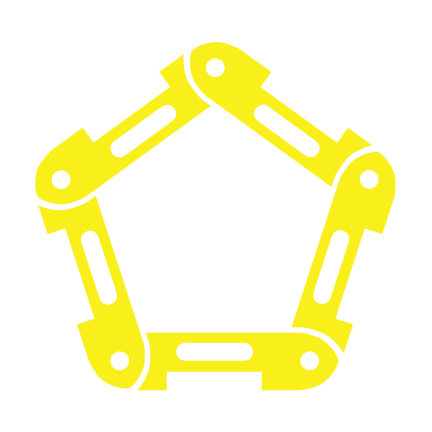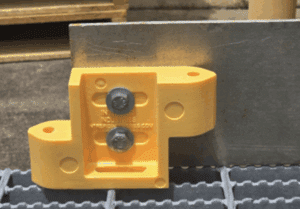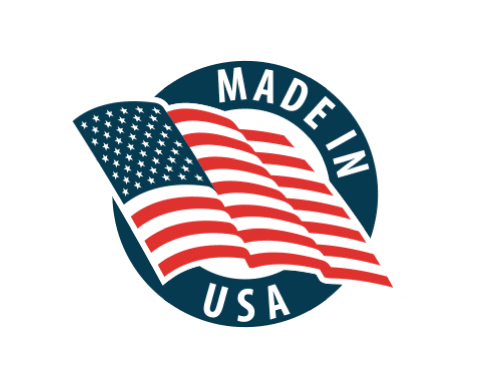Industrial safety standards

Toeboard Standards
United States Occupational Safety and Health Administration (OSHA)
1910.23(e)(2) – Design requirements for mobile ladder stands. The employer must ensure:
1910.23(e)(2)(ii) – Mobile ladder stands with a top step height above 10 feet (3 m) have the top step protected on three sides by a handrail with a vertical height of at least 36 inches (91 cm); and top steps that are 20 inches (51 cm) or more, front to back, have a midrail and toeboard. Removable gates or non-rigid members, such as chains, may be used instead of handrails in special-use applications
1910.23(e)(3) – Design requirements for mobile ladder stand platforms. The employer must ensure:
1910.23(e)(3)(iii) – All ladder stand platforms with a platform height above 10 feet (3 m) have guardrails and toeboards on the exposed sides and ends of the platform.
1910.29(k) – Protection from falling objects.
1910.29(k)(1) – The employers must ensure toeboards used for falling object protection:
1910.29(k)(1)(i) – Are erected along the exposed edge of the overhead walking-working surface for a length that is sufficient to protect employees below.
1910.29(k)(1)(ii) – Have a minimum vertical height of 3.5 inches (9 cm) as measured from the top edge of the toeboard to the level of the walking-working surface.
1910.29(k)(1)(iii) – Do not have more than a 0.25-inch (0.5-cm) clearance or opening above the walking-working surface.
1910.29(k)(1)(iv) – Are solid or do not have any opening that exceeds 1 inch (3 cm) at its greatest dimension.
1910.29(k)(1)(v) – Have a minimum height of 2.5 inches (6 cm) when used around vehicle repair, service, or assembly pits. Toeboards may be omitted around vehicle repair, service, or assembly pits when the employer can demonstrate that a toeboard would prevent access to a vehicle that is over the pit.
1910.29(k)(1)(vi) – Are capable of withstanding, without failure, a force of at least 50 pounds (222 N) applied in any downward or outward direction at any point along the toeboard.
1926.451(h) – Falling object protection.
1926.451(h)(1) – In addition to wearing hardhats each employee on a scaffold shall be provided with additional protection from falling hand tools, debris, and other small objects through the installation of toeboards, screens, or guardrail systems, or through the erection of debris nets, catch platforms, or canopy structures that contain or deflect the falling objects. When the falling objects are too large, heavy or massive to be contained or deflected by any of the above-listed measures, the employer shall place such potential falling objects away from the edge of the surface from which they could fall and shall secure those materials as necessary to prevent their falling.
1926.451(h)(2) – Where there is a danger of tools, materials, or equipment falling from a scaffold and striking employees below, the following provisions apply:
1926.451(h)(2)(i) – The area below the scaffold to which objects can fall shall be barricaded, and employees shall not be permitted to enter the hazard area; or
1926.451(h)(2)(ii) – A toeboard shall be erected along the edge of platforms more than 10 feet (3.1 m) above lower levels for a distance sufficient to protect employees below, except on float (ship) scaffolds where an edging of ¾ × 1½ inch (2 × 4 cm) wood or equivalent may be used in lieu of toeboards;
1926.451(h)(4) – Where used, toeboards shall be:
1926.451(h)(4)(i) – Capable of withstanding, without failure, a force of at least 50 pounds (222 n) applied in any downward or horizontal direction at any point along the toeboard (toeboards built in accordance with appendix A to this subpart will be deemed to meet this requirement); and
1926.451(h)(4)(ii) – At least three and one-half inches (9 cm) high from the top edge of the toeboard to the level of the walking/working surface. Toeboards shall be securely fastened in place at the outermost edge of the platform and have not more than ¼ inch (0.7 cm) clearance above the walking/working surface. Toeboards shall be solid or with openings not over one inch (2.5 cm) in the greatest dimension.
1926.501(b)(11) – Steep roofs. Each employee on a steep roof with unprotected sides and edges 6 feet (1.8 m) or more above lower levels shall be protected from falling by guardrail systems with toeboards, safety net systems, or personal fall arrest systems.
1926.501(c)(1) – Erect toeboards, screens, or guardrail systems to prevent objects from falling from higher levels
1926.502(j) – Protection from falling objects. Falling object protection shall comply with the following provisions:
1926.502(j)(1) – Toeboards, when used as falling object protection, shall be erected along the edge of the overhead walking/working surface for a distance sufficient to protect employees below.
1926.502(j)(2) – Toeboards shall be capable of withstanding, without failure, a force of at least 50 pounds (222 N) applied in any downward or outward direction at any point along the toeboard.
1926.502(j)(3) – Toeboards shall be a minimum of 3½ inches (9 cm) in vertical height from their top edge to the level of the walking/working surface. They shall have not more than ¼ inch (0.6 cm) clearance above the walking/working surface. They shall be solid or have openings not over 1 inch (2.5 cm) in greatest dimension.
1926.759(b) – Protection from falling objects other than materials being hoisted. The controlling contractor shall bar other construction processes below steel erection unless overhead protection for the employees below is provided.
The above is not comprehensive and does not reference all possible standards regarding these products. If you know of one that is not listed, please feel free to email us so that we can continue to update this accordingly. You may do so at feedback@intrepidindustries.com.
We always recommend doing your own research to decide which standard best fits your situation. If you are unsure, please contact your nearest standard organization for direction.
American National Standards Institute (ANSI)
2. DEFINITIONS
2.25 Toeboard. (Also referred to as Toeplate or Kickplate.) Vertical barrier at floor level, erected along exposed edges of a floor or wall opening, platform/landing, runway, or ramp to prevent objects from falling over the edge.
3. PROTECTION OF FLOOR OPENINGS AND FLOOR HOLES, ROOF OPENINGS AND ROOF HOLES
3.2 Ladderway Floor Opening. Every ladderway floor opening or platform shall be guarded by a guardrail system with toeboards on all exposed sides, except at entrance to opening. The entrance way shall be guarded so that a person cannot walk directly into the opening.
3.3.2 A removable guardrail system with toeboard along all sides of the opening as required by usage and a fixed railing system with toeboards on all other exposed sides. The removable guardrail systems shall be kept in place when the opening is not in use.
3.5 Floor Opening or Hole. Every roof, floor opening, or hole into which persons can accidentally walk, shall be guarded by either a railing system with toeboards along all exposed sides or a loadbearing cover. When the cover is not in place, the roof, floor opening, or hole shall be protected by a removable guard railing system or shall be attended when the guarding system has been removed.
3.5.1 Every roof, floor opening, or hole into which persons cannot accidentally walk (e.g. because of pipes, fixed machinery, equipment, or walls) shall be protected by a securely fastened cover or toeboards that leave no openings which permit tools or objects from passing through.
3.8 Floor Opening or Hole. Every roof opening, floor opening, or hole into which persons can accidentally walk, shall be guarded by either a railing system with toeboards along all exposed sides or with a load-bearing cover secured in place. When the cover is not in place, the roof opening, floor opening, or hole shall be protected by a removable guard railing system or shall be attended when guarding system has been removed.
4. PROTECTION OF WALL OPENINGS AND WALL HOLES
4.3.1 Toeboard Required. Where the window opening is less than four inches (102mm) above the landing, floor or
platform, a toeboard shall be provided.
4.5 Wall Hole. Where there is a hazard of persons or objects falling through a wall hole and the lower edge of the near side of the hole is less than four inches (102mm) above the floor, and the far side of the hole is more than four feet (1.22m) above the next lower level, the hole shall be protected by a toeboard or an enclosing screen either of solid construction or as specified in Section 5.13.
5. PROTECTION OF OPEN-SIDED FLOORS, PLATFORMS, RUNWAYS, AND RAMPS
5.1 Open-Sided Floor and Platform. Every open-sided floor or platform four feet (1.22m) or more above adjacent floor or ground level shall be guarded by a railing system (or equivalent as specified in 5.6) along all open sides, except where excluded as specified in 1.2 or where there is entrance to a ramp, stairway or fixed ladder. The railing system shall be provided with a toeboard wherever, beneath the open sides, (1) persons can pass, (2) there is moving machinery, or (3) there is equipment with which falling objects could create a hazard.
5.2 Runway. Every runway shall be guarded by a railing system (or the equivalent as specified in Section 5.6) along all open sides four feet (1.22m) or more above floor or ground level. Wherever tools, machine parts or objects are likely to be used on the runway, a toeboard shall also be provided along each exposed side.
5.3 Hazardous Location. Regardless of height, open sided floors, walkways, platforms, or runways above or adjacent to dangerous equipment, pickling or galvanizing tanks, degreasing unit, and similar hazards, such as regular work space at the edge of roofs, shall be guarded with a railing system and toeboard.
5.7 Toeboard. A toeboard shall be a minimum three and one-half inches (89mm) in height and securely fastened in place, with not more than one-fourth inch (6mm) clearance above floor level. Toeboards shall be made of a substantial material, either solid or with openings not over one inch (25mm) in their greatest dimension. The height of the toeboard shall be increased if materials are stored adjacent to the railing and additional protection is required. Additional toeboards shall be added above the required unit, or metal screening of at least 18-gauge thickness shall be installed between the floor and the intermediate or upper rail.
3. DEFINITIONS
Toeboard. A barrier erected along the exposed edges of a platform or landing surface to prevent falls of materials or tools that would create hazards to persons below.
6.3 Platforms
6.3.1.2 All platforms shall be provided with railing and toeboards, in accordance with ANSI A1264.1- 2007.
The above is not comprehensive and does not reference all possible standards regarding these products. If you know of one that is not listed, please feel free to email us so that we can continue to update this accordingly. You may do so at feedback@intrepidindustries.com.
We always recommend doing your own research to decide which standard best fits your situation. If you are unsure, please contact your nearest standard organization for direction.
Australian Standard® (AS)
1.5 DEFINITIONS
1.5.28 Toeboard – A purpose-designed component fixed on the edge of a floor, platform or walkway to prevent objects from falling; also known as kickboard.
SECTION 4 PLATFORMS AND LANDINGS
4.6 TOEBOARD – Where an object could fall from a platform or landing onto an area lo which access by persons is available, a toeboard complying with Clause 6.1.2 shall be provided.
SECTION 5 WALKWAYS
5.5 TOEBOARD – A toeboard complying with Clause 6.1.2 shall be installed on the edge of a walkway where there is no permanent structure within 10 mm of the edge, and from which an object could fall to where persons have access to the area below and to the side of the walkway. Any gap between the underside of the toeboard and the walkway surface shall be not greater than 10 mm. The top of the toeboard shall be not less than 100 mm above the floor.
5.6 HANDRAILS
5.6.6 Toeboard – A toeboard complying with Clause 6.1.2 shall be installed where required by Clause 5.5 and shall be firmly attached to the posts or the floor. Any gap between the toeboard and the floor shall not exceed 10 mm. The top of the toe board shall be not less than 100 mm above the floor.
SECTION 6 PHYSICAL EDGE PROTECTION
6.1.2 Toeboard – A toeboard installed on a platform or walkway shall be designed to withstand a horizontal force of 100 N positioned on the member to achieve the worst effect. The horizontal deflection shall be limited so that the horizontal gap between the inside face of the toe board and the edge of the walkway or platform does not exceed 10 mm. Under these loads, no part of the system shall elastically deflect by more than 30 mm.
7.5 SINGLE-STILE RUNG-TYPE LADDERS
7.5.8 Ladder stile – The foot of the ladder stile shall terminate at or within 150 mm of landing and the rear face of the first rung should be within the vertically projected area of the landing.
NOTES:
1 For the required dimension of landings, see Clause 7.3.6.
2 Where guardrails are fitted to the landing platform, toeboards should not extend across ladder openings.
J3 GUARDRAILING
Where tools or equipment could slide or roll off the roof and fall onto persons beneath, a toeboard complying with Clauses 5.5 and 6.1.2 should be fitted.
The above is not comprehensive and does not reference all possible standards regarding these products. If you know of one that is not listed, please feel free to email us so that we can continue to update this accordingly. You may do so at feedback@intrepidindustries.com.
We always recommend doing your own research to decide which standard best fits your situation. If you are unsure, please contact your nearest standard organization for direction.
Canada Occupational Health and Safety Regulations (COHS)
TOE BOARDS
2.13 If there is a risk that tools or other objects could fall onto a person from a platform or other raised area, or through a floor opening or floor hole,
(a) a toe board that extends from the floor of the platform or other raised area to a height of not less than 125 mm(1) shall be installed; or
(b) if the tools or other objects are piled to such a height that a toe board would not prevent the tools or other objects from falling, a solid or mesh panel shall be installed from the floor to a height of not less than 450 mm.
GUARDRAILS AND TOE BOARDS
3.8 (1) Guardrails and toe boards shall be installed at every open edge of a platform of a temporary structure.
(2) The guardrails and toe boards referred to in subsection (1) shall meet the standards set out in sections 2.12 and 2.13.
The above is not comprehensive and does not reference all possible standards regarding these products. If you know of one that is not listed, please feel free to email us so that we can continue to update this accordingly. You may do so at feedback@intrepidindustries.com.
We always recommend doing your own research to decide which standard best fits your situation. If you are unsure, please contact your nearest standard organization for direction.
European Standards (EN)
4.2 SPECIFIC MATERIAL REQUIREMENTS
4.2.1.4 Side protection – Items used exclusively for side protection, other than toe-boards, shall have a minimum nominal wall thickness of 1,5 mm. For toeboards the minimum nominal wall thickness shall be 1,0 mm. A lesser thickness may be used if the serviceability and load bearing capacity is ensured for instance by the use of stiffening sections, bracing or shaping of the cross section.
5.5 SIDE PROTECTION
5.5.1 General – Working and access areas shall be safeguarded by a side protection consisting of at least a principal guardrail, intermediate side protection and a toeboard.
5.5.4 Toeboard – A toeboard shall be fixed so that its top edge is at least 150 mm(1) above the adjacent level of the working area. Holes and slots in a toeboard shall, except for handling holes be no larger than 25 mm in one direction.
Italian national legislative deviations In Italy – according to DPR (Decree of the President of the Republic) 7th January 1956 n. 164 (Standards for the prevention of accidents at work in the building sector), art. 24, the height of the toeboard shall be equal to 20 cm(1), instead of 15 cm
5.1 GENERAL
5.1.1 Basic requirements – An edge protection system shall consist of a principal guardrail and either an intermediate guardrail or an intermediate protection. It shall also be possible to attach a toeboard. All components in the system shall be designed to avoid accidental removal or displacement of any component in any direction during use.
5.1.4 Toeboard – The distance between the uppermost part of the toeboard and the working surface shall be at least 150 mm(1), at any point, measured perpendicular to the working surface. The toeboard shall be designed to avoid gaps between it and the working surface. If there are gaps, a sphere with a diameter of 20 mm shall not pass through them. For other situations for example where the working surface is not flat, any gaps should be maintained as small as practicable.
3 TERMS AND DEFINITIONS
3.2.4 Toe-plate – solid lower part of a guard-rail or upstand on a landing to prevent the fall of objects from a floor level
7 SAFETY REQUIREMENTS APPLICABLE TO GUARD-RAILS
7.1.3 A guard-rail shall be provided when the gap between a platform and the structure of a machine or wall is
greater than 200 mm or if the protection of the structure is not equivalent to a guard-rail. However, a toe plate shall
be provided when the gap between the platform and adjoining structure is greater than 30 mm.
7.1.7 A toe-plate with a minimum upstand of 100 mm shall be placed 10 mm maximum from the walking level
and the edge of the platform
The above is not comprehensive and does not reference all possible standards regarding these products. If you know of one that is not listed, please feel free to email us so that we can continue to update this accordingly. You may do so at feedback@intrepidindustries.com.
We always recommend doing your own research to decide which standard best fits your situation. If you are unsure, please contact your nearest standard organization for direction.
Material Handling Industry (MH)
6.5 Kick plate – All areas requiring guardrails in accordance with the above paragraphs shall be provided with a solid kick plate that extends is a minimum of 4 inches (10.2 cm) above the walking surface with no more than a ¼ inch (3 mm) clearance above the floor. There shall be no horizontal opening in the kick plate in excess of 1 inch (2.5 cm).
- In applications where this applies, our T5 and GPC products will not suffice due to their height only being 4” (102mm). Although, if you wanted to use our product, you could bolt our T5 to the structure and then bolt plating of the needed height to our product as shown here:
The above is not comprehensive and does not reference all possible standards regarding these products. If you know of one that is not listed, please feel free to email us so that we can continue to update this accordingly. You may do so at feedback@intrepidindustries.com.
We always recommend doing your own research to decide which standard best fits your situation. If you are unsure, please contact your nearest standard organization for direction.



